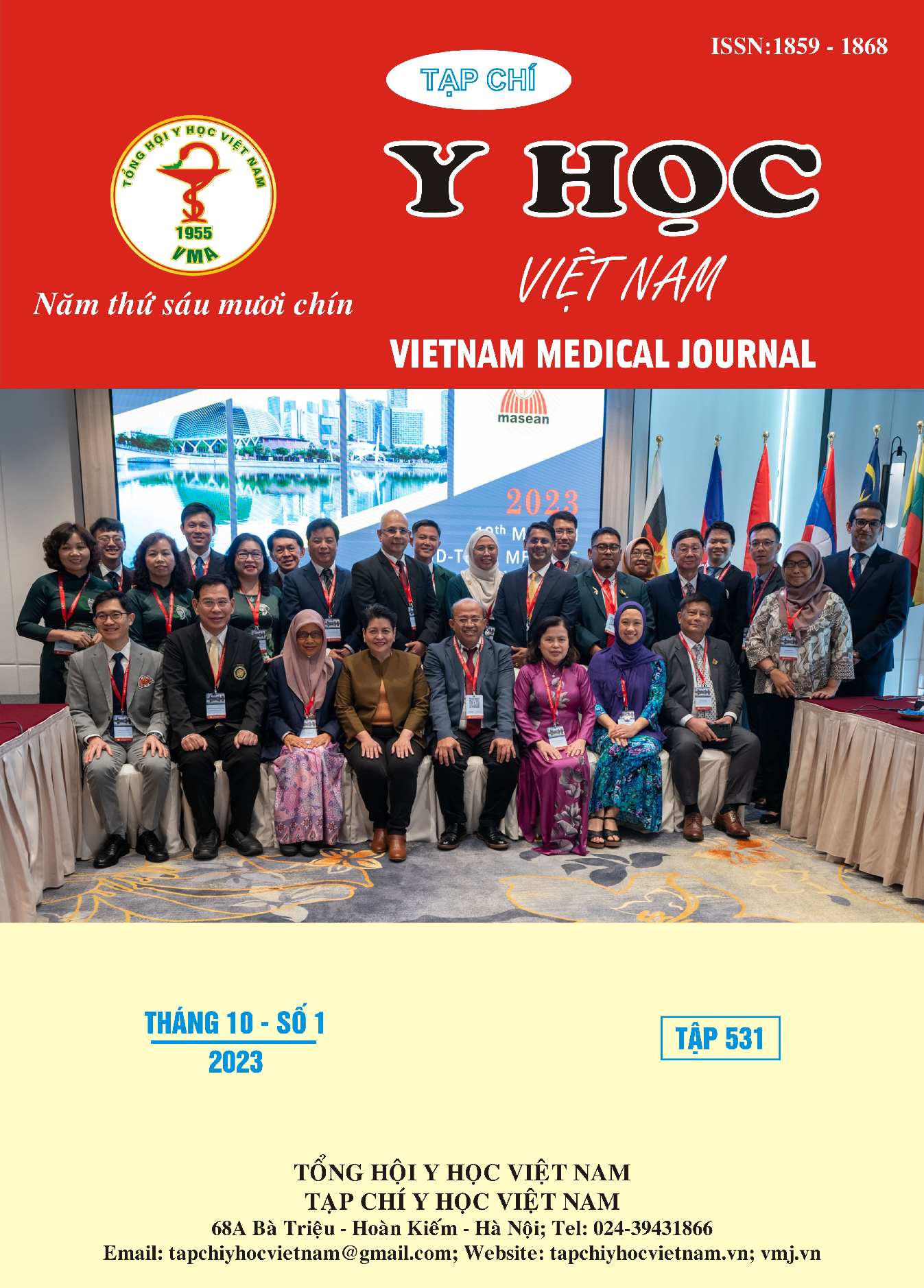ASSESSMENT OF THE RESULTS OF TREATMENT OF OSTEOPOROTIC LUMBAR VERTEBRAE INSTABILITY BY INJECTABLE HOLLOW PEDICLE SCREWS WITH PMMA
Main Article Content
Abstract
Objectives: To evaluate the results of treatment of LVI with nerve compression in terms of clinical, imaging and complications of the injectable hollow screw with PMMA in the fixation surgery of LVI. Subjects and Methods: A retrospective descriptive study of all cases of LVI with osteoporosis (T- score < -2.5SD) who were operated by PLIF with hollow screw with bio-cement augmentation at the Department of Neurosurgery, Thong Nhat Hospital, Ho Chi Minh City from June 2015 to June 2021. Results: We retrospectively reviewed 59 patients who underwent surgery to treat LVI with osteoporosis by using injectable hollow pedicle screws with PMMA, we obtained: preoperative clinical symptoms such as low back pain on the VAS scale decreased from 7.10 points to 2.56 points (statistically significant reduction P < 0.05) and nerve root pain decreased from 6.44 points to to 1.67 points (statistically significant reduction p < 0.05). Neurogenic claudication decreased by 74.6% to 6.8%, (statistically significant reduction p < 0.05). Some complications were recorded: cement leak, infection with a low rate. Results according to JOA scale: Very good 49.1%, good 39%, average: 11.9%, no bad cases. The JOA recovery rate improved significantly in patients with 1 and 2 levels and was significantly higher in patients with 3 levels. Conclusion: The hollow screw method with bio-cement pump through the stem is effective in the treatment of patients with MVCSTL with osteoporosis.
Article Details
Keywords
Lumbar vertebrae instability (LVI)
References
2. Nguyễn Thế Luyến (2010), “Kết quả phẫu thuật bệnh trượt đốt sống thắt lưng”, Y học TP.Hồ Chí Minh, Tập 14, phụ bản số 1, tr.257-261.
3. Nguyễn Vũ (2015), “Nghiên cứu điều trị trượt đốt sống thắt lưng bằng phương pháp cố định cột sống qua cuống kết hợp hàn xương liên thân đốt”, Luận án Tiến sĩ Y học, Đại học Y Hà Nội.
4. El-Soufy, M., et al (2015), “Clinical and Radiological Outcomes of Transforaminal Lumbar Interbody Fusion in Low-Grade Spondylolisthesis”, J Spine Neurosurg, Volume 4, Issue 2, pp.2-6.
5. Galbusera F, Volkheimer D, Reitmaier S, Berger-Rosher N, Kienle A, Wilke HJ (2015), “Pedicle screw loosening: a clinically relevant complication?”, Euro Spine J, Volume 24, pp.1005-1016.
6. Lee YL, Yip KM, Kevin MH (1996), “The osteoporotic spine”, Clinical Orthop Relat Res, Volume 1, pp.91-97.
7. Sakaura, H., et al (2013), “Outcomes of 2-level posterior lumbar interbody fusion for 2-level degenerative lumbar spondylolisthesis: Clinical article”, Journal of Neurosurgery Spine, volume 19, issue 1, pp. 90-94.
8. Stoffel M., Behr M., Reinke A., Stuer C., Ringel F., Meyer B. (2010), “Pedicle screw-based dynamic stabilitation of the thoracolumbar spine wiyh the cosmic-systerm: a prospective observation”. Acta Neurochir (Wien), 152(5), pp. 835-843.
9. Waits C, Burton D, McIff T (2009). Cement augmentation of pedicle screw fixation using novel cannulated cement insertion device”. Spine, 34(14):E478-83.


